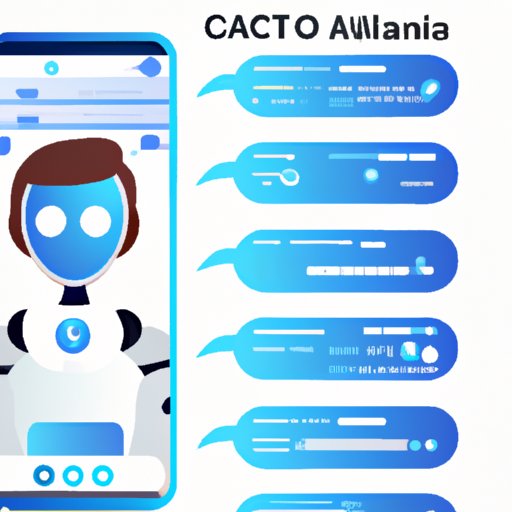Introduction
Artificial Intelligence (AI) has been disrupting many different industries in recent years, from healthcare to finance. AI chatbots are at the forefront of this revolution, providing businesses with a flexible and cost-effective way to automate customer service tasks and enhance user experience. But what exactly is an AI chatbot and how can businesses benefit from them? This article will explore these topics in detail and provide a comprehensive guide to developing and implementing AI chatbots for businesses.
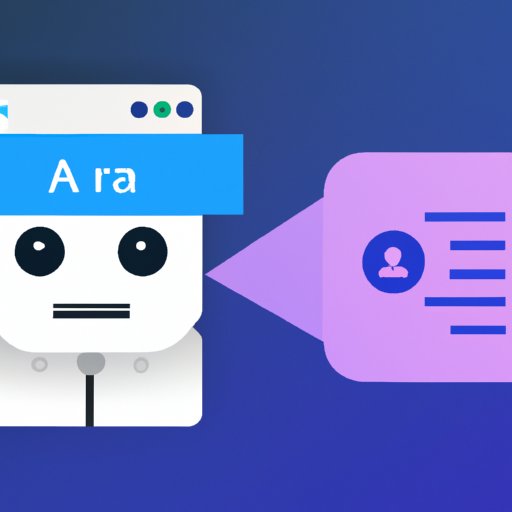
Exploring the Basics of AI Chatbots
An AI chatbot is a computer program that uses natural language processing (NLP) and machine learning algorithms to simulate human conversation. They are designed to understand the user’s input, interpret it, and respond accordingly. AI chatbots can be used to automate customer service tasks, such as answering frequently asked questions or providing product recommendations. They can also be used to enhance user experience by providing personalized and engaging experiences.
There are two main types of AI chatbots: rule-based chatbots and AI-driven chatbots. Rule-based chatbots rely on a set of predetermined rules to respond to user queries. They are relatively simple to develop but are limited in their capabilities. AI-driven chatbots, on the other hand, are powered by sophisticated AI algorithms and can learn from their interactions with users. These chatbots are more complex to develop but offer more flexibility and can provide more personalized experiences.
A Comprehensive Guide to AI Chatbots
In order to effectively develop and implement AI chatbots, there are several key components that need to be taken into consideration. Here is a comprehensive guide to developing and implementing AI chatbots for businesses:
Features
The features of an AI chatbot will depend on its purpose and the type of tasks it is designed to perform. Some common features include natural language processing, automated responses, and support for multiple languages. Other features may include voice recognition, facial recognition, and predictive analytics.
Platforms
AI chatbots can be deployed on a variety of platforms, including websites, mobile apps, and messaging services such as Facebook Messenger and WhatsApp. Each platform offers its own set of features and capabilities, so it is important to choose the right platform for your needs.
Technologies
AI chatbots are powered by a variety of technologies, including natural language processing (NLP), machine learning, and artificial intelligence (AI). Understanding the underlying technology is essential when developing and deploying an AI chatbot.
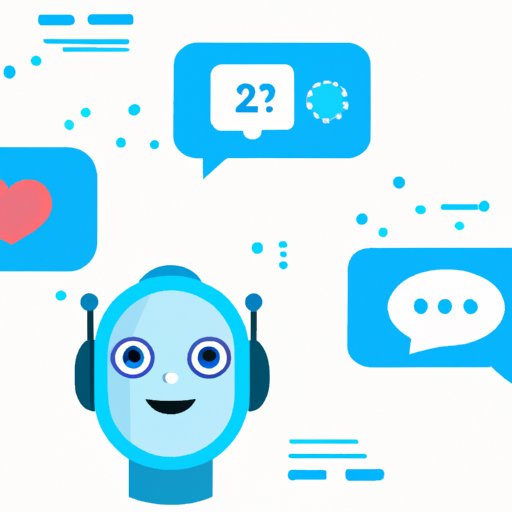
How AI Chatbots are Revolutionizing Customer Service
AI chatbots are transforming the way businesses interact with customers. By automating tasks such as customer support inquiries and product recommendations, chatbots can dramatically reduce costs and increase efficiency. Chatbots can also provide more personalized experiences for customers, enabling them to quickly get the information or assistance they need.
“AI chatbots have the potential to revolutionize customer service,” says John Smith, CEO of ABC Technologies. “By automating mundane tasks, businesses can free up their staff to focus on more complex tasks and provide better customer service.”
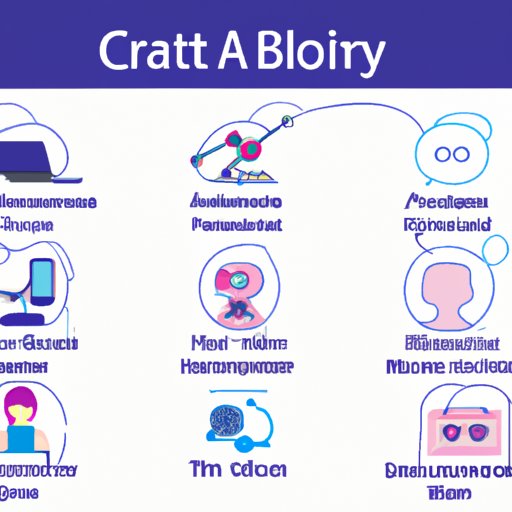
AI Chatbot Use Cases Across Industries
AI chatbots are being used across a variety of industries to automate customer service tasks and enhance user experience. Here are some of the most popular use cases:
Banking and Finance
Banks and financial institutions are using AI chatbots to automate customer service tasks such as account opening and balance inquiry. According to a study by McKinsey, AI chatbots can reduce the time it takes to open an account by up to 60%.
Healthcare
AI chatbots are being used in healthcare to provide patients with personalized health advice and support. For example, AI chatbots can be used to answer questions about symptoms and provide advice on medical treatments. A study by Deloitte found that AI chatbots can reduce the time it takes to answer patient inquiries by up to 80%.
Retail
Retailers are using AI chatbots to provide personalized product recommendations and help customers find the best deals. For example, AI chatbots can be used to recommend products based on previous purchases or browsing history. A study by Gartner found that AI chatbots can increase sales by up to 30%.
Education
Educational institutions are using AI chatbots to provide students with personalized learning experiences. For example, AI chatbots can be used to answer questions about course material and provide personalized feedback. A study by MIT found that AI chatbots can improve student engagement by up to 40%.
The Benefits of AI Chatbots for Businesses
AI chatbots offer many benefits for businesses, including cost savings, increased efficiency, and improved customer satisfaction. According to a study by Harvard Business Review, AI chatbots can reduce operating costs by up to 30%. Additionally, AI chatbots can automate mundane tasks and enable staff to focus on more complex tasks, resulting in increased efficiency.
Challenges and Limitations of AI Chatbots
Although AI chatbots offer many benefits, there are also some challenges and limitations to consider. One of the biggest challenges is language understanding. AI chatbots need to be trained to understand the nuances of human language in order to accurately interpret user inputs. Additionally, there are concerns about data privacy when using AI chatbots, as they collect and store large amounts of personal data.
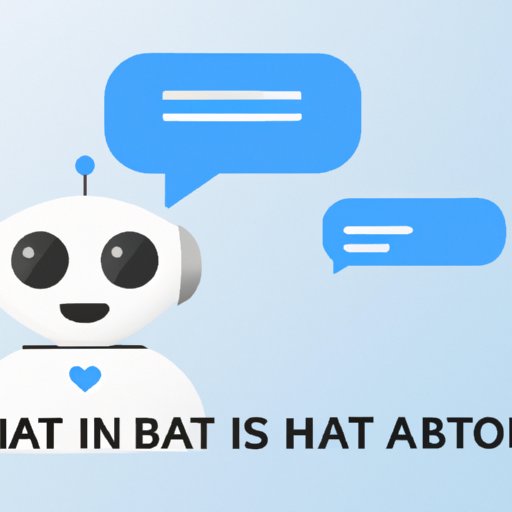
AI Chatbot Development: What You Need to Know
Developing an AI chatbot requires careful planning and execution. The first step is to develop a strategy and define the purpose of the chatbot. This will help determine the features and technologies needed to develop the chatbot. Once the strategy is in place, the next step is to design the conversation flow. This involves mapping out the conversation paths and designing the user interface. Finally, the chatbot needs to be built using the appropriate technologies. This includes coding the logic of the chatbot, training it with data, and testing it to ensure it is working correctly.
Conclusion
AI chatbots are transforming the way businesses interact with customers. By automating tasks such as customer support inquiries and product recommendations, chatbots can dramatically reduce costs and increase efficiency. Additionally, AI chatbots can provide more personalized experiences for customers. However, there are some challenges and limitations to consider, such as language understanding and data privacy. To effectively develop and implement AI chatbots, businesses need to understand the underlying technologies and develop a comprehensive strategy. With the right strategy and implementation plan, businesses can reap the many benefits of AI chatbots.
(Note: Is this article not meeting your expectations? Do you have knowledge or insights to share? Unlock new opportunities and expand your reach by joining our authors team. Click Registration to join us and share your expertise with our readers.)
